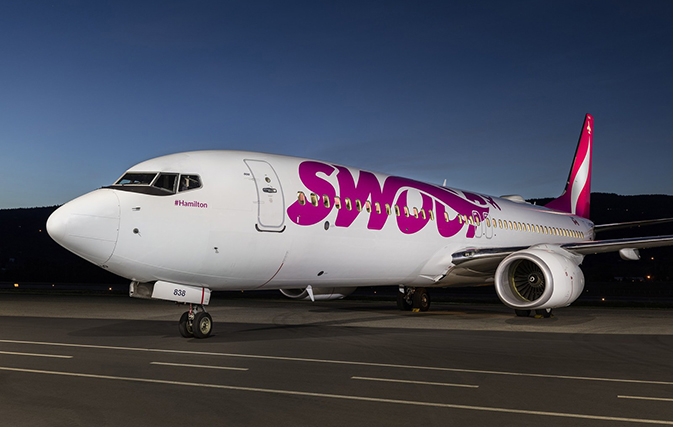TORONTO — WestJet Airlines Ltd. topped expectations in its latest quarter, but chief executive Ed Sims said Tuesday the airline continues to face challenges from the grounding of its Boeing 737 Max aircraft and lagging demand at its discount subsidiary.
“For the last 18 days of March, our absolute revenue was adversely impacted, as we spent considerable effort re-accommodating thousands of disrupted guests,” Sims said, referring to impact of the grounding of the 737 Max aircraft.
The airspace ban weighed on the company’s revenue in the first quarter, which rose 5.5 per cent year over year to $1.26 billion _ slightly lower than analysts expected.
Sims said the impact on its second quarter looks harsher, with passenger capacity reduced by up to three per cent from April through June.
WestJet’s 13 Max 8s – about 10 per cent of its total seat capacity – remain grounded after regulatory authorities across the globe closed their skies to the aircraft following a second fatal crash in March that Boeing has since linked to a malfunctioning safety alert.
While Air Canada has extended its leases on a half-dozen narrow-body jetliners and taken long-term leases for six Airbus A321 jets, WestJet has opted to draw on its existing fleet, extending just one lease on a Boeing 737-700 jetliner.
“Certainly, I have not seen any kind of rationale that would justify the costs of short-term leases,” Sims said, adding that he has “a clear line of sight” to the Boeing software updates that are expected to precipitate a lift on the flight ban.
Meanwhile Swoop, WestJet’s discount brand, continued to struggle in the shoulder season, said chief financial officer Harry Taylor.
“Swoop was weaker than we expected and would have liked,” he said. “Awareness is so low. It hasn’t even had its first birthday yet.”
Competition among budget carriers is intensifying, with Swoop recently launching routes to Mexican and Caribbean hot spots to battle for customers with Transat A.T., Air Canada and Sunwing Airlines.
The rivalries have spawned a predatory pricing investigation into WestJet and Swoop by Canada’s competition watchdog, following a complaint from Flair Airlines.
Taylor said the ultra-low-cost Swoop, which launched last June, is now listed on travel fare search engines such as Skyscanner and Google Flights, prompting an uptick in bookings. The company is also negotiating agreements with large online travel agencies, including Expedia, he said.
“We are not giving up or worried about it,” Taylor said.
Swoop’s woes were the “primary driver” behind low revenue per available seat mile (RASM), a key performance measure, Sims said on a conference call with investors ahead of the airline’s annual meeting in Calgary.
Analyst Doug Taylor of Canaccord Genuity called the results “mixed,” pointing to solid profits but “slightly disappointing” RASM. The metric grew just 0.2 per cent last quarter versus the 4.5 per cent RASM growth that Air Canada posted in quarterly results Monday.
Swoop’s RASM is expected to pick up in the second half of the year, analysts said.
On Tuesday, WestJet announced that it and regional offshoot WestJet Encore had reached tentative agreements with the Canadian Airline Dispatchers Association.
WestJet topped expectations as it reported its first-quarter profit climbed more than 30 per cent compared with a year ago, bolstered by a $15-million sale-leaseback deal for three Boeing Dreamliner jets.
The company’s revenue boost was partly due to a first-quarter record of 6.3-million passengers, a 5.3 per cent increase from a year earlier that rose in lockstep with available seat miles.
Revenue from premium cabin fares surged 76 per cent year over year, while ancillary revenue – from baggage and cabin upgrades, for example – jumped more than 15 per cent to over $126 million, Sims said, stressing the company’s turn toward jet-setting business travellers.
The Calgary-based company said it earned $45.6 million or 40 cents per diluted share for the quarter ended March 31, compared with a profit of $34.2 million or 30 cents per diluted share a year ago.
Analysts on average had expected a profit of 34 cents per share and revenue of $1.28 billion, according to Thomson Reuters Eikon.
The increased earnings came as WestJet saw both its capacity, measured by available seat miles, and its traffic, measured by revenue passenger miles, climb by 5.3 per cent compared with a year ago.
The airline’s load factor, a measure of how full its aircraft were, held steady at 84.8 per cent in the quarter.
